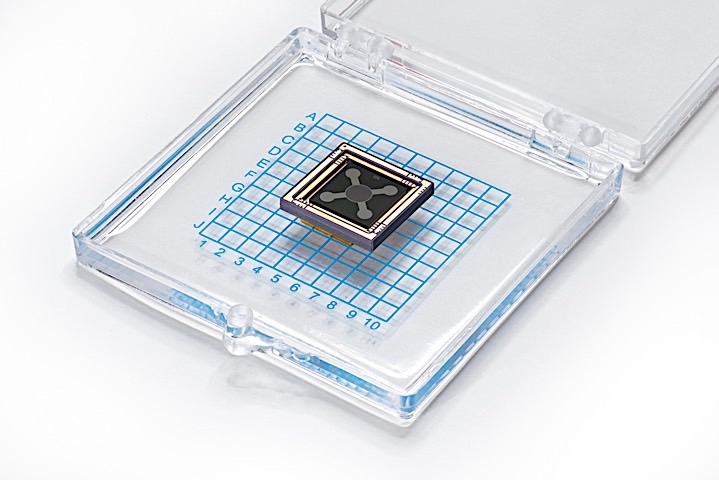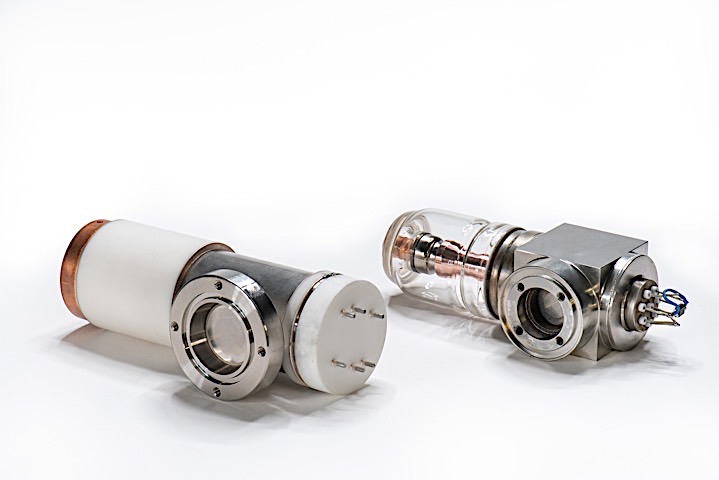X-rays are taken for granted in the western world, but the World Health Organization believes that close to two-thirds of the global population do not have reliable access to diagnostic imaging. The cost of the equipment alone is prohibitive in many developing countries, as well as the cost of maintaining and powering the hardware, which can run into several million dollars. Nanox claims that its “digital” X-ray machine, a Star Trek-inspired biobed called the Nanox Arc, is cheaper to use, easier to maintain and doesn’t require installation in a hefty hospital facility.
The company gave its first live demonstration of the technology earlier this week. The presentation came from its Israel HQ, broadcast to the (online-only, thanks to COVID) Radiological Society of North America’s annual conference. During the show, CEO Ran Poliakine had his X-ray taken with a device carrying the firm’s custom hardware. He then demonstrated the beds, which scanned a leg of lamb and some medical dummies for analysis.
During the presentation, a pair of “independent” radiologists eulogized the work Nanox was doing. They commented on both the speed and accuracy of the images taken, especially when examining a 3D image of a chest X-ray. The pair said that the greater number of tubes -- the Nanox Arc has six independent X-ray tubes which can be used at different amplitudes -- could make spotting small lesions and tumors easier.
These tubes are the source of Nanox’s innovation; 10-centimeter cylinders that use “cold cathode” technology. A sextet of these tubes sits inside the ring, while a mechanical bed draws patients through it, enabling the machine to scan their whole body. Nanox says that the system could offer skeletal X-rays, as well as computerized tomography (CT) scans, at the same time. After a minute of processing, the data is used to create a scrollable 3D model of a person’s body, allowing professionals to see both the soft tissue and skeleton.

Nanox’s story begins in the wreckage of Sony’s doomed Field Emission Display project, which started in 1998. Sony was looking to build higher-definition TVs that avoided the (then common) problems of dead pixels, flickering and burn-in that came with LCD and Plasma Screen TVs. Its solution took the basic concept of an old Cathode Ray TV -- an electron gun firing at a phosphorescent display -- and update it. Rather than a single electron gun firing at a screen, Sony built a MEMS chip that packed millions of tiny electron guns into a silicon wafer.
Early demonstrations of the technology, which offered high definition and a reduced risk of dead pixels, were promising. But Sony’s pricey but potentially superior tech was usurped by advances in (increasingly cheaper) LCD/LED TVs. In 2009, Sony killed the project after reportedly spending close to a billion dollars in R&D, and then sold the technology (and the team) to Japanese businessman Hitoshi Masuya. He recruited Powermat founder Poliakine to join and run the company, which has been working on adapting the technology for medical imaging.

A traditional “hot cathode” X-ray works by passing an electric current through a filament, which heats up. The filament, trapped in a vacuum, shoots electrons toward an anode, and when they collide, high-energy photons (X-rays) are released. The tube itself is lead-lined, apart from a single aperture, and this is how these photons are directed at a person. Some parts of the human body are more permeable to X-rays than others, so capturing what gets through on photographic film allows a radiographer to see what’s going on inside the person. One downside is that heating the filament takes plenty of energy and time, and the tube requires regular replacement.
Creating a “cold cathode” system, without the need for heating, has been the goal for a number of companies for years. (The earliest X-rays used cold cathodes, known as Crookes Tubes, but they proved unreliable). Recently, researchers have tried building cold cathodes with carbon-nanotube-based field emitters which act like an electron gun. But no company has yet to get these systems to market -- we found a 2019 press release from a company called Meiden but the trail then stops cold. This is where Sony’s “billion-dollar” Field Emission Display technology comes in, as it relies upon existing technology. It already acts as a basic electron gun, and can be activated and deactivated at the flick of a switch, without the need for heating.
Not everyone is as enthusiastic about the company as some of its most vocal cheerleaders are right now. In the wake of the company’s decision to make its Initial Public Offering (IPO) back in August, analyst and short-selling specialist Andrew Left got involved. The figure behind Citron Research, also a longstanding critic of Tesla, said Nanox was a “complete farce.” Left added that the company was another Theranos and that its claimed customer list was “fake.”
Poliakine described Left’s claims as “bullshit,” and “a lie,” adding that his focus is on delivering the finished product. It’s clear, however, that a demonstration of the technology in front of a group of prominent radiologists would help dismiss these claims. (Engadget contacted Andrew Left for comment, and at the time of publication had not received a response). It won’t be until Nanox’s hardware is being used, or at least tested, in the real world by independent assessors, that we’ll have a clear picture of its efficacy and reliability.
Nanox isn’t planning to target hospitals and big healthcare companies, instead, it’s looking to get its wares to under-served areas. The business model is a little different, too. It won’t charge for the beds, which Poliakine says cost just $14,000 to build and ship, compared to around $300,000 for a basic CT scanner. Instead, it’ll loan them to remote clinics, much in the same way you can loan an office printer from a big corporation, and charge $14 for every scan taken. That fee would also cover cloud storage and the option to use an AI medical analysis service. A number of companies are working on AI that will help doctors find abnormalities in X-ray scans.
Nanox is now turning its attention towards the first rollout of hardware, which is planned for the start of 2021. The company expects to install a handful of beds in the first few months, but plans to reach a goal of 15,000 units in the next few years. Once clinics have judged the value of the technology, we’ll see if Nanox’s aim is ambitious or not.
via https://AiUpNow.com December 4, 2020 at 11:06AM by , Khareem Sudlow,
